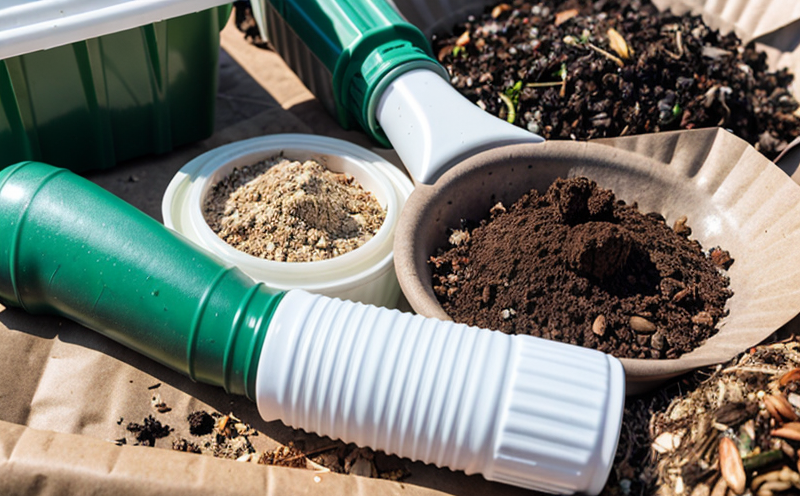EN 13669 Lead in Organic Waste Samples
The European Standard EN 13669 is pivotal in ensuring that organic waste and compostable materials are free from harmful contaminants like lead, which can have adverse effects on human health and the environment. This standard sets stringent limits for heavy metals, including lead, to ensure the safety of products intended for use or further processing into soil conditioners or fertilizers.
The relevance of this test is particularly critical in sectors such as waste management, recycling, organic farming, and environmental conservation where the quality and safety of compostable materials are paramount. Lead contamination can lead to significant issues if not managed properly; hence, adhering to EN 13669 ensures compliance with regulations and protects consumers from potential risks.
Organic waste testing under this standard involves several key steps. Samples must be collected in a manner that does not introduce any external contaminants, which may lead to inaccurate results. The sample preparation process is equally crucial as it directly impacts the accuracy of the test outcomes. This includes drying and grinding the samples if necessary, homogenizing them, and then carefully selecting subsamples for analysis.
The testing apparatus typically comprises sophisticated analytical instruments capable of detecting trace amounts of lead. These might include atomic absorption spectrophotometry (AAS), inductively coupled plasma optical emission spectroscopy (ICP-OES), or ICP-mass spectrometry, depending on the sensitivity required for the detection limits set by EN 13669.
The standard specifies a maximum allowable concentration of lead to ensure that compost and soil conditioners meet safety standards. Compliance with this limit is essential not only for meeting regulatory requirements but also for maintaining consumer trust in products derived from organic waste streams.
Given the importance of accurate measurement, it's crucial to follow strict protocols when handling these samples. This includes using appropriate personal protective equipment (PPE) and ensuring that all laboratory procedures adhere to best practices outlined by relevant health and safety guidelines.
Scope and Methodology
| Scope | Description |
|---|---|
| Sample Collection | The collection of organic waste samples should be conducted in a manner that does not introduce external contaminants. Samples must be representative of the entire batch or lot. |
| Sample Preparation | This involves drying, grinding (if necessary), homogenizing the sample, and selecting subsamples for analysis to ensure accurate results. |
| Analytical Instrumentation | The use of sophisticated analytical instruments such as AAS or ICP-OES is essential for detecting trace amounts of lead in organic waste samples. |
Quality and Reliability Assurance
- Precision and accuracy checks are conducted using certified reference materials (CRMs).
- Duplicate analyses are performed on the same sample to ensure consistency.
- Laboratory personnel undergo regular training and certification for proficiency in conducting these tests.
- Quality control measures include routine calibration of all instruments used in the testing process.
Competitive Advantage and Market Impact
Compliance with EN 13669 can significantly enhance a company's market position by ensuring that products meet stringent regulatory requirements. This not only builds trust with consumers but also helps in maintaining long-term relationships with suppliers and clients.
Achieving compliance opens up opportunities for businesses to enter new markets where there is growing demand for sustainable and safe organic waste management practices. It can also lead to a competitive edge by demonstrating commitment to environmental responsibility, which is increasingly important in today’s market landscape.
By adhering to this standard, companies can ensure that their products are not only safe but also meet the highest quality standards, thereby setting a benchmark for industry excellence.





